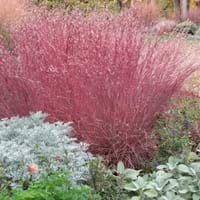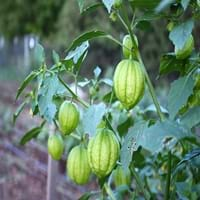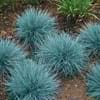Origin
North America, United States, Northeastern United States, Mid-Atlantic United States, Southeastern United States, North-Central United States, Central United States, South-Central United States, Southwestern United States, Mexico
Mexico, Caribbean, Central America
Types
Greener Pastures
Green Tomatillo, Purple Tomatillo
Habitat
Grassland
Cultivated Beds
USDA Hardiness Zone
4-9
6-9
AHS Heat Zone
10 - 3
12*1
Sunset Zone
1a, 1b, 2a, 2b, 3a, 3b, 4, 5, 6, 7, 8, 9, 10, 11, 12, 13, 14, 15, 16, 17, 18, 19, 20, 21, 22, 23, 24
A3, H1, H2, 1a, 1b, 2a, 2b, 3a, 3b, 4, 5, 6, 7, 8, 9, 10, 11, 12, 13, 14, 15, 16, 17, 18, 19, 20, 21, 22, 23, 24
Habit
Clump-Forming
Oval/Rounded
Flower Color
Purple
Yellow, Sandy Brown
Flower Color Modifier
Bicolor
Bicolor
Fruit Color
Not Available
Green, Purple, Yellow green
Leaf Color in Spring
Light Green
Green
Leaf Color in Summer
Light Green
Green
Leaf Color in Fall
Red, Purple
Green
Leaf Color in Winter
Tan
Not Available
Leaf Shape
Grass like
Lance shaped
Plant Season
Summer, Fall, Winter
Spring, Summer, Fall, Winter
Sunlight
Full Sun, Partial Sun
Full Sun
Growth Rate
Fast
Very Fast
Type of Soil
Loam, Sand
Clay, Loam, Sand
The pH of Soil
Acidic, Neutral, Alkaline
Neutral
Soil Drainage
Well drained
Well drained
Bloom Time
Late Summer, Early Fall
Indeterminate
Tolerances
Drought
Drought
Where to Plant?
Ground
Container, Ground
How to Plant?
Divison, Seedlings
Seedlings
Plant Maintenance
Medium
Medium
Watering Requirements
Medium
Average Water Needs
In Summer
Lots of watering
Drought Tolerant, Average Water
In Spring
Moderate
Moderate
In Winter
Average Water
Average Water
Soil pH
Acidic, Neutral, Alkaline
Neutral
Soil Type
Loam, Sand
Clay, Loam, Sand
Soil Drainage Capacity
Well drained
Well drained
Sun Exposure
Full Sun, Partial Sun
Full Sun
Pruning
Remove damaged leaves, Remove dead branches, Remove dead leaves
Remove all suckers, Remove wet foliage
Fertilizers
All-Purpose Liquid Fertilizer
All-Purpose Liquid Fertilizer
Pests and Diseases
Red blotch
Fungal Diseases
Plant Tolerance
Drought
Drought
Flowers
Showy
Insignificant
Flower Petal Number
Single
Single
Foliage Texture
Fine
Medium
Foliage Sheen
Matte
Matte
Attracts
Butterflies
Birds, Flea beetles
Allergy
Not Available
Arthritis, Inflammation
Aesthetic Uses
Showy Purposes
Not Used For Aesthetic Purpose
Beauty Benefits
Not Available
Good for skin
Environmental Uses
Air purification
Air purification
Medicinal Uses
Not Available
Cancer, Diabetes, Energy, Opthalmic
Part of Plant Used
Leaves, Root
Fruits
Other Uses
Showy Purposes
Used for making green salsas and chilli sauce, Used in salads
Used As Indoor Plant
No
No
Used As Outdoor Plant
Yes
Yes
Garden Design
Cutflower, Dried Flower/Everlasting, Groundcover, Mixed Border, Rock Garden / Wall
Edible, Herb / Vegetable
Botanical Name
ERAGROSTIS spectabilis
PHYSALIS philadelphica
Common Name
Purple Lovegrass
Green Tomato, Mexican Groundcherry, Tomatillo
In Hindi
eragrostis spectabilis
Tomatillos
In German
eragrostis spectabilis
Tomatillos
In French
eragrostis spectabilis
Tomatilles
In Spanish
Eragrostis spectabilis
Tomatillos
In Greek
eragrostis spectabilis
Tomatillos
In Portuguese
Eragrostis spectabilis
Tomatillos
In Polish
Eragrostis okazałe
Tomatillos
In Latin
Eragrostis spectabilis
Tomatillos
Phylum
Magnoliophyta
Magnoliophyta
Class
Liliopsida
Magnoliopsida
Order
Cyperales
Solanales
Family
Poaceae
Solanaceae
Genus
Eragrostis
Physalis
Clade
Angiosperms, Commelinids, Monocots
Angiosperms, Asterids, Eudicots
Tribe
Eragrostideae
Physaleae
Subfamily
Chloridoideae
Solanoideae
Number of Species
Not Available
Not Available
Season and Care of Purple Lovegrass and Tomatillo
Season and care of Purple Lovegrass and Tomatillo is important to know. While considering everything about Purple Lovegrass and Tomatillo Care, growing season is an essential factor. Purple Lovegrass season is Summer, Fall and Winter and Tomatillo season is Summer, Fall and Winter. The type of soil for Purple Lovegrass is Loam, Sand and for Tomatillo is Clay, Loam, Sand while the PH of soil for Purple Lovegrass is Acidic, Neutral, Alkaline and for Tomatillo is Neutral.
Purple Lovegrass and Tomatillo Physical Information
Purple Lovegrass and Tomatillo physical information is very important for comparison. Purple Lovegrass height is 45.70 cm and width 5.10 cm whereas Tomatillo height is 60.00 cm and width 90.00 cm. The color specification of Purple Lovegrass and Tomatillo are as follows:
Purple Lovegrass flower color: Purple
Purple Lovegrass leaf color: Light Green
Tomatillo flower color: Yellow and Sandy Brown
- Tomatillo leaf color: Green
Care of Purple Lovegrass and Tomatillo
Care of Purple Lovegrass and Tomatillo include pruning, fertilizers, watering etc. Purple Lovegrass pruning is done Remove damaged leaves, Remove dead branches and Remove dead leaves and Tomatillo pruning is done Remove all suckers and Remove wet foliage. In summer Purple Lovegrass needs Lots of watering and in winter, it needs Average Water. Whereas, in summer Tomatillo needs Drought Tolerant, Average Water and in winter, it needs Average Water.





